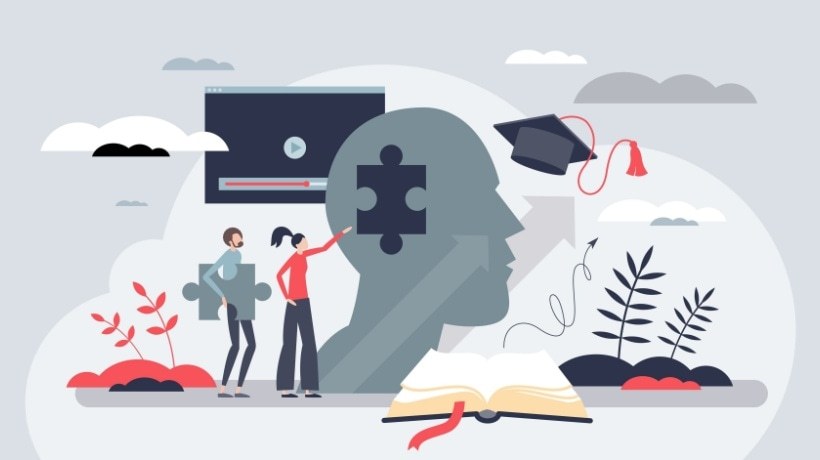3 Ways Learning Helps You To Deliver Robust Business Impact
People often say to us, 'you say how easy it's to get learning to make a difference for the business...but show us an example'. Good news, this article will address this request. It's not a corporate example but rather, something that happened to us personally at recent visits to 2 Santa Barbara wineries.
Employee Learning and Development made a difference at each winery but not for the same reasons. In both instances, we were customers, but we were also learning practitioners.
Naturally, wineries depend highly on customer discretionary income. This means that the clientele has choices. They can choose to spend money at a winery or a variety of other discretionary income activities.
Successful wineries recognize the business elements to focus upon. They know customers with discretionary income expect attention to detail. They expect individual treatment and want to be informed.
The winery knows most customers' intentions aren't to only taste wines but to also purchase one or more bottles. And these wines aren’t your typical $10 bottles from the corner liquor store.
For experienced learning practitioners, these are the ingredients to achieving business results, or commonly referred to a business impact.
The Winery Experience
Once seated at the first winery, we were ready to order our tastings. But before doing so, we had questions for our young server Kayla. She quickly explained to us she had just recently started her job and would do her best to answer our questions.
Regretfully, this was not the first impression we expected from a reputable, high-end winery. We made our selections with Kayla's limited assistance. As she began pouring, we and our friends had questions about the wine. Regretfully, the answers Kayla offered were at best, incomplete.
Kayla’s lack of attention, experience, and knowledge left us unsatisfied and left us regretting spending money at this winery. Our experience left us unfulfilled while each of us promised never to return. Worse, our California friends vowed they would never recommend this winery to others.
Here’s a quick calculation for the immediate business impact (or what Learning and Development professionals refer to as Level 4) for the winery resulting from Kayla’s poor performance (or what L&D refers to as Level 3):
First, the revenue that the winery earned from the 4 of us was approximately $100. Assuming the cost of the wine is $25 (75% gross margin), the server's salary attributable to our service amounts to $15, and 25%, or $25, for other overhead expenses, the winery's rough profit from our visit is about $35.
The downside of the visit led to Kayla receiving a tip of 10% or less (we gave 10%, our friends less) when she could have received 20% for knowledgeable service.
Furthermore, the individual attention visitors expect from a high-end winery never happened. The owners never greeted us to see how our ‘disposable income’ and we were doing.
As a collective result of the experience, none of us purchased a bottle of wine. The average price of a bottle was $80 multiplied, by 4 customers, is $320 in foregone revenue.
Not that the owners, in the winery at the time, did any of these basic calculations, the winery essentially resulted in an immediate loss of $280 from our visit.
This is the result of our visit. Let's do the possible long-term business impact from our friends comment not recommending this winery to others. It's true we’re unable to accurately forecast what may or may not occur why would any business chance it?
A recent study states that 54% of customers share bad experiences with more than 5 people. And that’s only for one degree of separation. Based only on this statistic, 4 of us will collectively speak to at least 20 people.
Multiplied these 20 connections by the $25 tasting per person and that amounts to more than $500 of potential lost sales. Additionally, this doesn’t include lost potential bottle sales amounting to more than $1,600 and the incalculable cost to the winery’s reputation.
But the news is not all bad. Subsequently, our friends took us to a second winery exceeding our expectations. The conversation we were having with our friends had us comparing the second winery’s exceptional service to the first. The experience fulfilled the expectations we had of visiting a winery. Not only did we all purchase tastings, 3 of us purchased wines for a total sale of close to $500 from the 4 of us and a commitment to return.
How Learning Can Connect to Business
For whatever reason, learning practitioners fail to recognize how their efforts contribute to business results. Furthermore, it’s unfathomable how practitioners continue to over-complicate their learning efforts. Learning practitioners may be good at what they do, but imagine how much better they could be if they respected why the learning is needed in the first place.
The following are 3 simple, but essential, ways to develop robust business contributing learning solutions:
1. Be A Customer
Kayla was not responsible for our poor experience at the first winery. The owners could have avoided this if they had instructed Kayla on how to properly serve discerning wine customers. They should develop and offer training and coaching to the staff encompassing why a customer comes to the winery, what they expect during their visit, and what they expect when they leave. Framing learning efforts around these areas focus on the right skills, not all of the skills. This is what the second winery did.
2. Be The Decision-Maker
Business leaders expect to make a profit. Profit making, however, requires generating sales while appropriately allocating scarce resources. Recognizing Kayla’s inexperience, the winery should have supported her with an experienced wine expert or, at least, a mentor. This appropriate use of resources would have made it a positive experience for us and could have possibly generated additional sales. Again, the second winery did this well.
3. Be The Employee
Did anyone ask Kayla what she's expected to learn about the winery and their wines? Did the winery assess her current level of knowledge during or after the hiring phase? Did the design of the learning effort emphasize what Kayla and her peers needed to learn, rather than simply cramming everything she should learn? Only the winery can accurately answer these questions. But learning practitioners often focus on developing the learning rather than on the needs of the employee. It's clearly apparent that this wasn't the case for the first winery but it was evident at the second one.
Learning and Development must acknowledge and accept it’s an internal business function within a business expected to deliver business results. Delivering learning value for the business means connecting to customer needs, reconciling business expectations, and respecting what employees need for their roles to make a business difference.
Learning isn’t about cost recovery or profitability. Learning’s business role is about leveraging existing resources to improve employee performance. Do this, and you’ll achieve job application and ultimately business results. No more, no less. And, I hope the owners of the first winery read this article to improve their performance.









